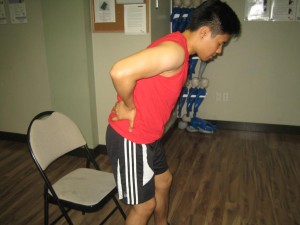Some individuals experience hip pain after using a treadmill. It is important to note that jogging or walking using a treadmill is considered as a weight-bearing exercise that can lead to hip pain due to tendonitis, inflammation or a sprain.
Overusing the hip muscles and the ensuing pain can be managed with rest, application of ice packs and pain medications such as ibuprofen. Overextension of the gait promotes hip pain since the upper leg muscles and the glutes are repetitively and unusually stretched out.
Pain-causing conditions of the hip joint
Injuries to the hip that occurs after using a treadmill include muscle strains, pinched nerves and tendonitis. If an individual continues to use a treadmill, it can worsen current conditions such as arthritis, bursitis as well as trigger flare-ups of previously unknown bone deformities.
If an incline is used while using the treadmill, it can also trigger hip pain since the higher the incline, more force is applied on the hip joints and muscles. In addition, walking at a consistent, rapid pace can also result to pain.

Hip tendonitis
Overusing the tendons is the typical cause of the flare-ups of hip tendonitis, particularly the iliopsoas or interior hip muscles. As one of the strongest of the hip flexors, the iliopsoas is vital in running, standing or walking.
Extensive use of this tendon can occur while using a treadmill. Advancing age is also a factor since the elasticity of the tendon decreases. The symptoms of hip tendonitis include hip pain while sleeping, difficulty moving the hips and inability to get comfortable in a chair or bed. In some cases, there is warmth in the affected hip region.
Hip bursitis
The bursa serve as cushions in between the bone and muscles to prevent them from rubbing against each other as well as producing friction that can disrupt with normal movement. Once the bursa becomes inflamed, pain occurs since the liquid within the sacs are not enough due to overexertion. The greater trochanter is the usual site for bursitis since it contains a large number of bursa sacs. The condition causes piercing hip pain in the affected area that can later on spread and develop to whole body achiness.
Hip labral tears
A hip labral tear is oftentimes hard to diagnose which involves a piece of soft tissue called the labrum which covers the exterior edge of the hip joint socket. The labrum is responsible for ensuring that the ball is in place at the top part of the femur as well as for stabilization by expanding the socket and promoting flexibility.
Engaging in repetitive activity such as using a treadmill can result to a degenerative tear in the labrum. In addition, the tears are often seen before the start of arthritis. The symptoms include groin pain, clicking sensation and lack of full hip mobility.
